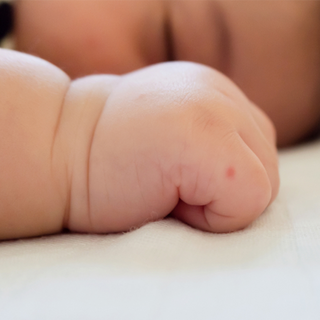
Swaddling your babies properly is the key to making sure they sleep peacefully and for longer. And which parent doesn’t want that? Swaddling helps make your baby feel safe and secure by re-creating a womb-like feeling to soothe your little one. Learn why swaddling is so important, how to select the right swaddle blanket and how to swaddle your baby perfectly in our blog ‘Everything you need to know about swaddling your baby’.
So, it’s clear that swaddling is great for your baby and in turn, for you as well. But when do you stop swaddling your baby and how does one make this process easy and stress-free for your little one? We have all the answers below.
WHEN can you stop swaddling your baby?
The truth is that you can stop swaddling your baby whenever you think it’s the right time. But, since swaddling is so beneficial for your little one, many parents like to continue for as long as possible. While swaddling can be stopped as early as 2-3 months, most parents continue for at least 4-5 months or even longer. Here are some signs that’ll help you figure out when your baby has outgrown the swaddle stage:
-
When your baby starts rolling over on to her tummy
For the sake of safety, swaddled babies should always be placed to sleep on their backs. If your baby has started rolling on to her stomach, it is time to stop swaddling. If a swaddled baby rolls over on to her stomach, she may not have the strength to push her body up and this can lead to suffocation.
-
When baby resists swaddling and starts breaking free of the swaddle
A lot of babies are experts at breaking free from the swaddle. This can be dangerous as a loose blanket in a crib can increase the risk of SIDS. However, this doesn’t necessarily mean that your baby is ready to stop swaddling. There are a lot of other alternatives to swaddle blankets such as swaddle sacks or swaddle bags that zip up.
-
When your baby’s startle reflex appears to have faded or become less frequent
A baby’s startle reflex or “Moro reflex” is an involuntary muscle movement that occurs in babies and can startle them awake while they are sleeping. A proper swaddle can help prevent them from getting startled awake by this reflex. However, a baby’s Moro Reflex mostly disappears by 4-5 months of age. Hence, this could also be a good time to stop swaddling.
-
When your little one shows that she doesn’t like being swaddled anymore
If your baby has started showing you that she is not comfortable in the swaddle any longer, then maybe you can start transitioning her out of the swaddling stage.
HOW to stop swaddling your baby?
Once you have decided that your baby doesn’t need to be swaddled any longer, it’s time to begin the transition process. Like with any other big change, this needs to be slow and gradual. It’s important to remember that your baby has gotten used to the comfort and safety provided by the swaddle, and so, the best way to ease them through the process is by taking it slow and easy. Take a look at these helpful tips that’ll make the transition process better:
-
Phase it out
Go slow and give your baby time to adjust to being swaddle-free. Here’s a great technique to phase it out -
1. First, when swaddling your baby, leaving one arm out of the swaddle and continue this for a few nights.
2. Once your baby seems comfortable with this, try leaving both arms outside of the swaddle for the next few nights.
3. After baby gets adjusted to having both arms out, remove the swaddle completely.
If your baby isn’t responding well to this and is NOT sleeping well, go back to swaddling and then try the same process again after a few weeks.
Most parents transition baby to a sleep sack or wearable blanket after this stage to make sure baby stays cozy through the night but also remains safe.
-
Don’t rush it
Don’t expect your baby to outgrow the swaddle immediately. This transition can take a week or more. What matters at the end of the day is that your baby sleeps peacefully, comfortably and in a safe manner.
-
Use other sleeping aids to comfort your baby
When you take away the swaddle, use other sleeping aids to help comfort and soothe your baby for a good night’s sleep. Many parents swear by white noise machines to help baby sleep soundly. As your baby’s hands will now be free, cover her hands with socks or mittens to make sure she doesn’t scratch her face while sleeping.
-
Keep your bedtime routine consistent
Over time, swaddling becomes a cue to your baby that it’s time to sleep. So, make sure you keep all other bedtime cues consistent such as a pre-bedtime bath, massage, feed or whatever your baby is used to. Create a warm, cozy, relaxed atmosphere to help baby sleep well.
Got any more swaddling-related questions?Leave a comment below and we will get back to you as soon as we can. Don’t forget to share your own experiences with swaddling as well. We’d love to hear them!



















